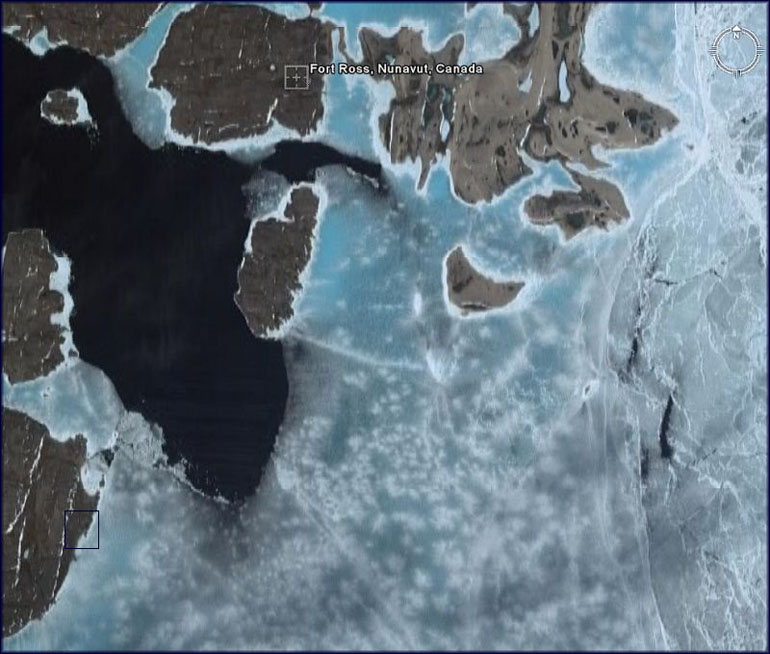The discussion continued on the Canadian Military Aviation [CanMilAv] forum and since I am not a member, Jerrold Vernon kindly relayed some of the contributions:
Ian MacDonald wrote:
"I thought it would just be a simple matter of going to the RCC "North of 60" List and finding it there, but there are only two DC-3s or Dakotas shown that far North, and they are nowhere near this in location or time frame....
CAF 12930 02 Nov 71 at 69°15'/123°24' SAR Gitzel
CF-DME 14 May 58 at 72°38'/84°04' Crashed & burned
So much for that idea.
On CAF 12930(KG580), Jeff's little blue book shows 03 Nov 71, but the SAR list says 02 Nov. Which??
Jeff's book doesn't show that any of those four s/ns you mention had crashed, only that they were SOS in 1949. Was that selection strictly based on the SOS (Struck of Charge) date being in 1949?
No. 9 Transport Group was an earlier name for Air Transport Command. 9 Transport Group existed from 05 Feb 45 to 01 Apr 48, and was headquartered at Rockcliffe. On 01 Apr 48, they were elevated to Command status and renamed Air Transport Command. As the HQ for RCAF air transport operations, numerous squadrons and other units reported to 9 Transport Group, so that won't be of too much help...
Based on the narrative above, it appears that the operation took place using North West Air Command aircraft, not 9(T)
Group aircraft from Eastern Canada.
The 413 Squadron History Book has lots of good detail about their Dakota and Canso operations in the far North in this time frame, but nothing like this is mentioned."
Jerry Vernon added to this:
Here is more info on what Ian Macdonald found on the Fort Ross crash.
There is no mention of any crash on the RCAF Record Card. It simply says "Strike-off" on 23 Jun 49.
The last Unit entry was at North West Air Command (Fort Nelson).
I have asked Ian what the date of the crash was.
A possible clue to the date is an entry on the back of the card that says: "31 Mar 49 - afage TSN - 1999:35; TSO - 570:40"
And:
Ian says the crash date was 28Mar49.
Obviously that "afage" note must have some significance and was written on the card a couple of days after the crash. Often the RCAF would write the TSN and TSO hours in the REMARKS on the face of a card when an aircraft was sold, scrapped or otherwise disposed of.
There is a proper section on the back of the card for filling in brief accident information, but this was not used.
Ian provided the names of the crew:
"The crew were-
27162 F/L T. Benson (P)
13322 F/O J.C. Sketchley (P)
20477 F/O D.W. Lyall (WO)
22113 F/O A.W. Batchelor DFC (NAV)
23929 Cpl Z.W. Wray (crewman)
25312 LAC J.C. Skjott (crewman)
All were NWAC K Flight except Lyall who was borrowed from WEE.
(Batchelor would be killed in an RAF Wellington crash; RP383 of 1ANS hit high ground in France on a nav' exercise to Malta, 8th February 1952)."
|



